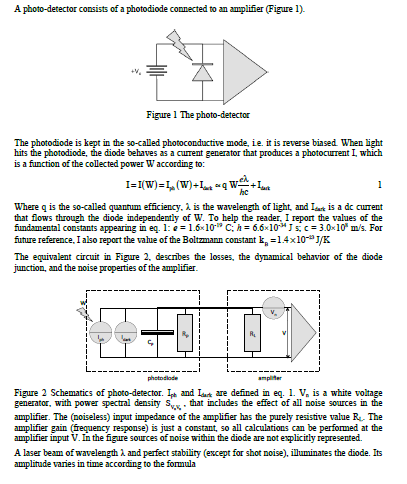

can you help me to do the problem ( some hints how to solve those problems based on experimental method course)


can you help me to do the problem ( some hints how to solve those problems based on experimental method course)
The RC limitation of the frequency (-3dB) depends by the junction capacitance and load resistance RC.

The junction capacitance is analogous with permitivity of the semiconductor material, the diode junction area and the width of the depletion layer. Increasing the width of the depletion layer reduces the junction capacitance and thereby the RC time constant. A high speed PD normally operates under the condition that Ri>>RL (Ri is 1~100MΩ)
However if you want to see the real performance of a PD, you have to enetr in the atomic level of the semiconductor structure, to define the frequency limitation as a function of transit time of the carriers. That is indicate the PD response to a square optical pulse and especially the fall edge of the pulse. In simple case and if diffusion mechanism eliminated, the frequency response it is limited by the average transit time of electrons and holes at saturation drift velocity

For example in a depletion width of 1μm with a fieldstrength of 2V across (max Vd), gives a saturated (max) carriers velocity of about 10^7/cms, and transient time of 10ps. This is about 5 times more that the RC limitation.